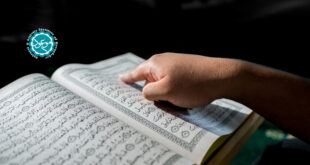The global civilization created by Islam also succeeded in activating the mind and thought of the people who entered its fold. As a result of Islam, the nomadic Arabs became torch-bearers of science and learning. The Iranians who had created a great civilization before the rise of Islam nevertheless produced much more science and learning in the Islamic period than before. The same can be said of the Turks and other peoples who embraced Islam. The religion of Islam was itself responsible not only for the creation of a world civilization in which people of many different ethnic backgrounds participated, but it played a central role in developing intellectual and cultural life on a scale not seen before. For some eight hundred years Arabic remained the major intellectual and scientific language of the world. During the centuries following the rise of Islam, Muslim dynasties ruling in various parts of the Islamic world bore witness to the flowering of Islamic culture and thought.
The Characteristic of Islamic Civilization
The symbol of Islamic civilization is the Holy Kaaba, the stability of which symbolizes the permanent and immutable character of Islam.
Once the spirit of the Islamic revelation had brought into being, out of the heritage of previous civilizations and through its own genius, the civilization whose manifestations may be called Islamic, the main interest turned away from change and adaptation. The arts and sciences came to possess instead stability and crystallization based on the immutability of the principles from which they had issue forth; it is this stability that is too often mistaken in the West today for stagnation and sterility.
The arts and sciences in Islam are based on the idea of unity, which is the heart of the Muslim revelation. Just as all genuine Islamic art, whether it be the Alhambra or mosque in Paris or London, provides the plastic forms through which one can contemplate the Divine Unity manifesting itself in multiplicity, so do all the sciences that can properly be called Islamic reveal the unity of Nature. One might say that the aim of all the Islamic sciences and, more generally speaking, of all the medieval and ancient cosmological sciences is to show the unity and interrelatedness of all that exists, so that, in contemplating the unity of the cosmos, man may be led to the unity of the Divine Principle, of which the unity of Nature is the image.
Islamic civilization as a whole is, like other traditional civilizations, based upon a point of view: the revelation brought by the Holy Prophet Muhammad (S.A.W.A) is the “pure” and simple religion of Adam and Abraham, the restoration of a primordial and fundamental unity. The very word Islam means both “submission” and “peace” or “being at one with the Divine Will.”
This was especially true in regard to the sciences of Nature, because most of the ancient cosmological sciences — Greek, as well as Chaldean, Iranian, Indian, and Chinese — had sought to express the unity of Nature and were therefore in conformity with the spirit of Islam. Coming into contact with them, the Muslims adopted some elements from each most extensively, perhaps, from the Greeks, but also from the Chaldeans, Indians, Iranians, and perhaps, in the case of alchemy, even from the Chinese. They united these sciences into a new corpus, which was to grow over the centuries and become part of the Islamic civilization, integrated into the basic structure derived from the Revelation itself.
The lands destined to become parts of the medieval Islamic world — from Transoxiana to Andalusia — were consolidated into a new spiritual universe within a single century after the passing away of the Holy Prophet (S.A.W.A).
Importance of Education in the Development of Islamic Civilization
The Muslim universities of those days led the world in learning and research. All knowledge was their field, and they took in and gave out the utmost knowledge attainable in those days. They were probably the most enlightened institutions that have ever been a part of a religion. Following these commands and traditions, Muslim rulers insisted that every Muslim child acquired learning, and they themselves gave considerable support to institutions, and learning in general.
This contributed largely with the commands of Islam to make elementary education almost universal amongst Muslims. It was this great liberality, which the Muslims displayed in educating their people in the schools which was one of the most potent factors in the brilliant and rapid growth of Islamic civilization. Education was so universally diffused that it was said to be difficult to find a Muslim who could not read or write.
Every place, from the mosque to the hospital, the observatory, to the madrassa was a place of learning. Scholars also addressed gatherings of people in their own homes. The mosque played a very great part in the spread of education in Islam. Once established, such mosques could develop into well known places of learning, often with hundreds, sometimes with thousands of students, and frequently contained important libraries.
Teaching and learning in most large mosques became a fully fledged profession, and the mosque school took on the semblance of a university later on. So important centers of higher learning, indeed, that many of them still exist today as the oldest universities in the world. Amongst these Al-Zaytuna in Tunisia, Al-Azhar in Egypt, and Al-Qarawiyyin in Fez, Morocco.
The universities of Granada, Seville and Cordoba were held in the highest estimation by the scholars of Asia, Africa and Europe, and in the ninth century, in the department of theology at Cordoba, alone, four thousand students were enrolled, and the total number in attendance at the University reached almost eleven thousand. And on the eve of the British occupation, in Al-Azhar, were already 7600 students and 230 professors.
In the early Islamic era, the mosque was used for the teaching of one or more of the Islamic sciences and literary arts, but after the mid ninth century, more and more came to be devoted to the legal sciences. Scientific subjects were also delivered, and included astronomy, medicine and engineering at Al-Azhar and the mosque of Ibn Tulun in Egypt.
In more than one respect Islam influenced Europe and subsequently the rest of the world with its system of education, including universality and its methods of teaching and granting diplomas.
The influence also came in the form of the many translated books of Islamic scholars which formed the core of European education in their first universities (Montpellier, Bologna, Paris, Oxford…), which all were founded in the twelfth-thirteenth centuries. [1]Jamia means at once both mosque and school, even when they are separate buildings, most often distant from each other. Finally, `Jamia’, the word for university in Arabic derives from Jami, mosque. No similar derivation exists in any other language or culture; no better association between Islam and higher learning than this.
These ‘Ulama were the most enlightened thinkers of their time and saved Islamic culture from deterioration in a thousand ways. The ‘Ulama who sought for knowledge “even though it were in China”.

 Mouood Mouood English Edition
Mouood Mouood English Edition



